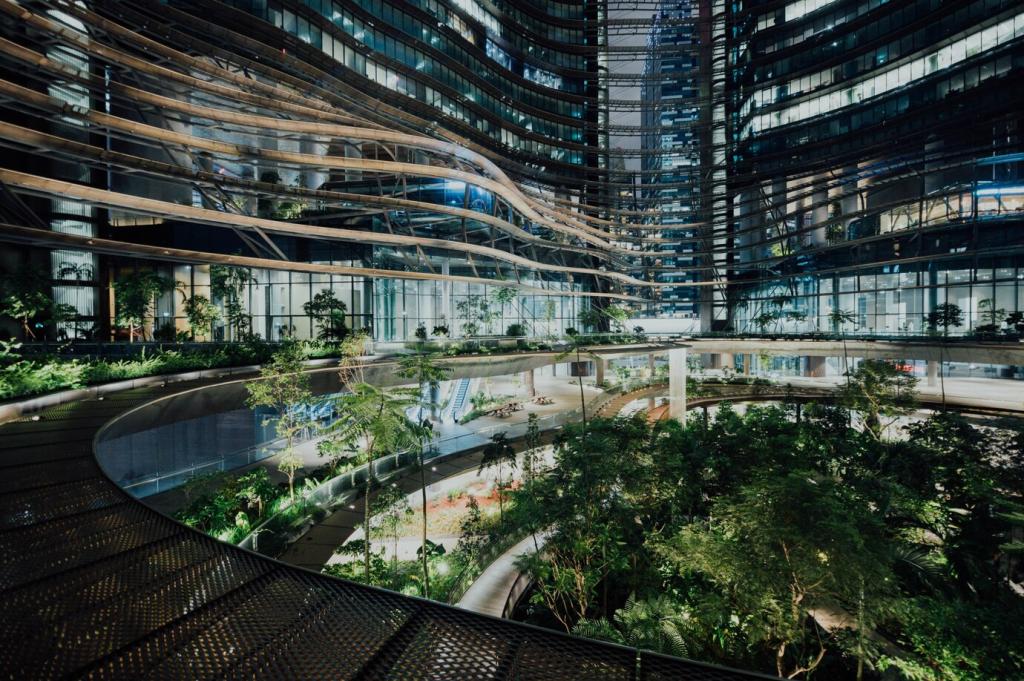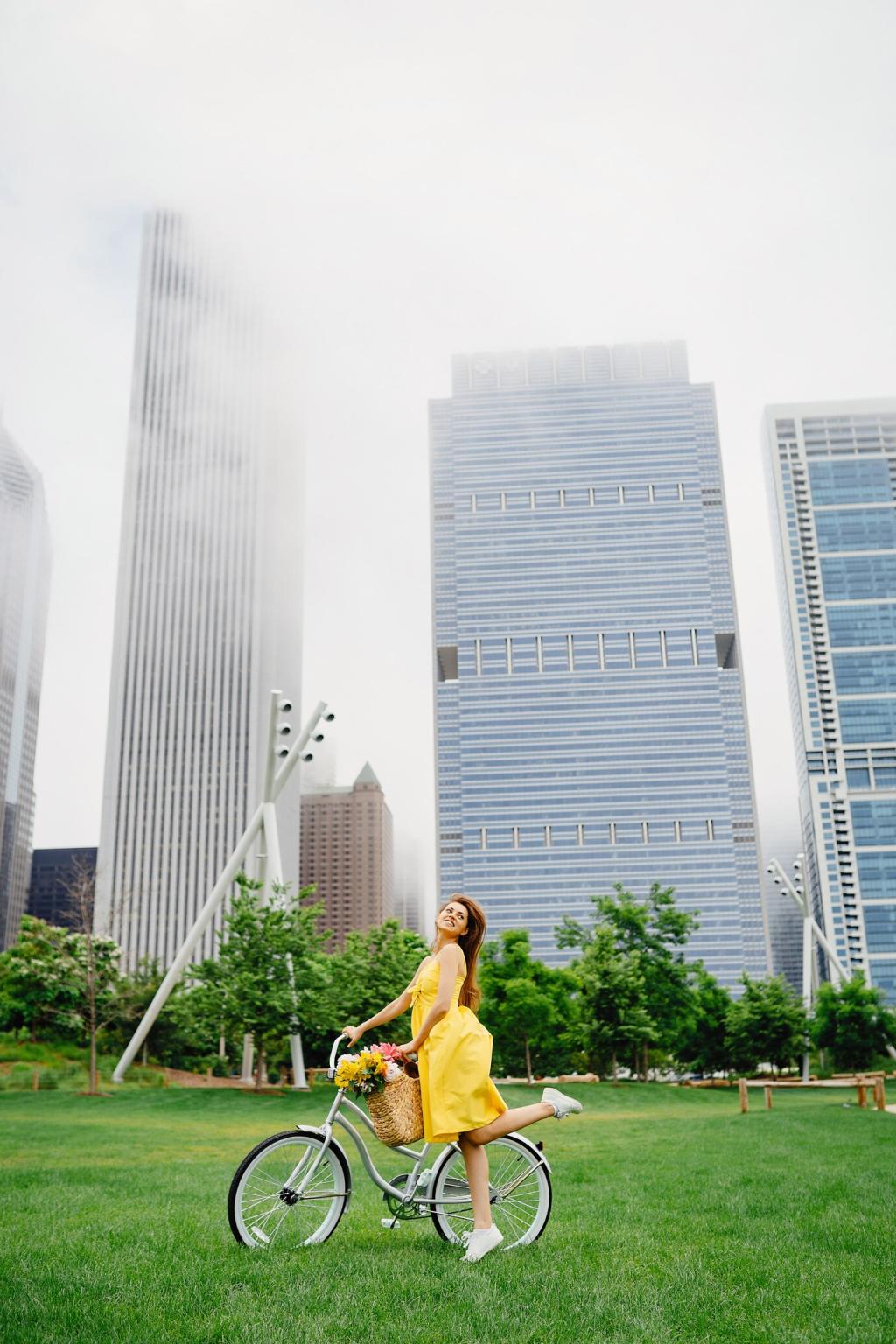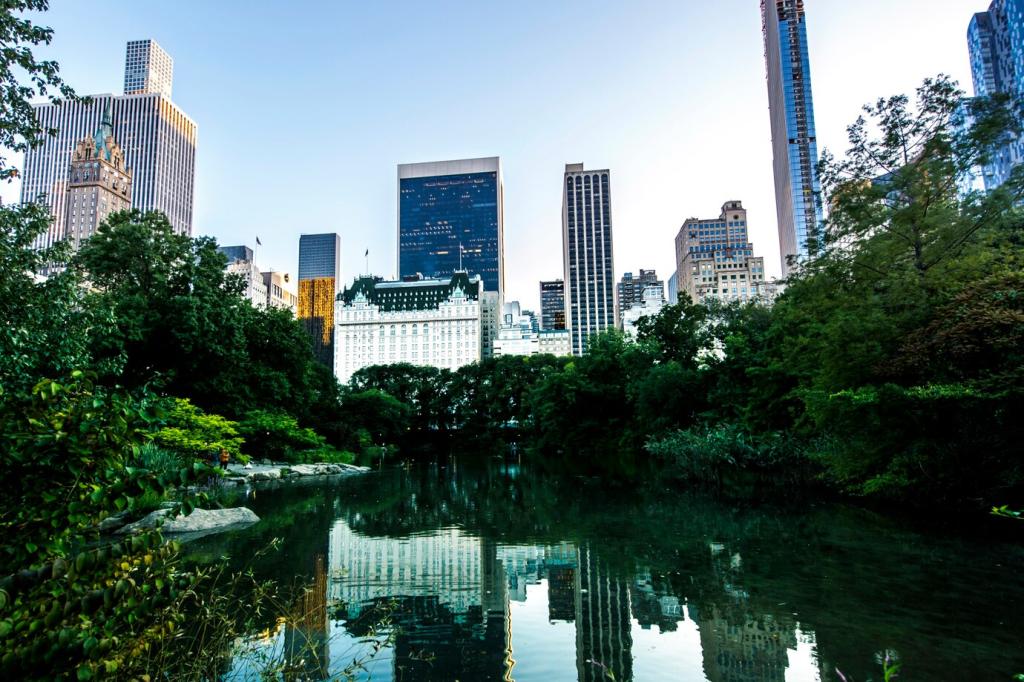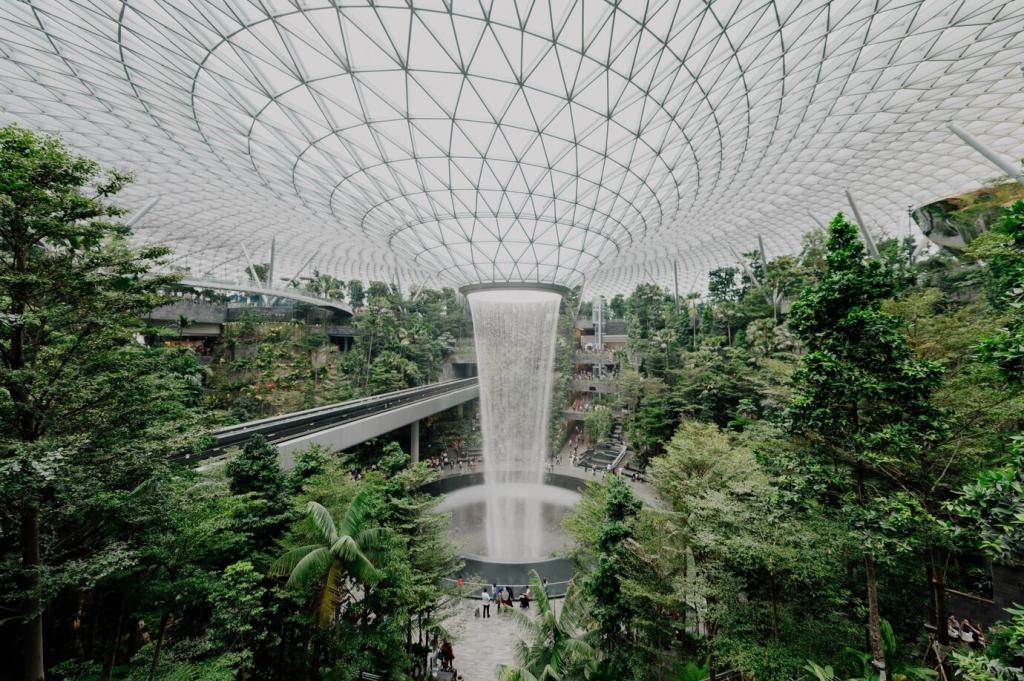Sustainable Decor Ideas for Urban Apartments
Discover how to create an eco-friendly sanctuary in your city dwelling. Sustainable decor balances contemporary style with environmental mindfulness, transforming even the smallest apartment into a comfortable, responsible, and visually stunning home. From sourcing materials thoughtfully to embracing minimalism, each approach empowers you to reduce your environmental impact without sacrificing personality or sophistication. Dive into these ideas to cultivate a chic urban interior that’s both ethical and inspiring.

Upcycling and Reclaimed Wood
Opting for upcycled furnishings or accent pieces crafted from reclaimed wood can transform your apartment while contributing to a circular economy. Reclaimed wood has a story—it might have once been part of an old barn, factory, or shipping pallet. Using such materials not only conserves resources but also infuses your space with warmth and history. Upcycled pieces, from shelves to dining tables, often feature beautiful imperfections and textures that make each piece truly one of a kind. By choosing these items, you reduce demand for virgin materials and actively divert waste from landfills, aligning your urban home with eco-conscious values.
Organic Textiles and Natural Fibers
Incorporate textiles made from natural fibers like organic cotton, linen, bamboo, or hemp. These materials are grown with fewer chemicals and less water than conventional options, making them gentler on the planet and safer for indoor air quality. Organic throws, cushions, and curtains feel softer and more breathable, subtly elevating comfort levels. Linen bedding, for example, not only regulates temperature but also boasts a relaxed, sophisticated look. Favoring natural fibers also supports agricultural methods that replenish, rather than deplete, the soil, further enhancing the sustainability of your home’s cozy touches.
Non-Toxic Finishes and Eco Paints
The finishes applied to your apartment’s surfaces play a significant role in both aesthetics and health. Seek out paints and stains that are low in volatile organic compounds (VOCs) to maintain cleaner indoor air. Eco-friendly finishes often use plant oils and mineral pigments instead of harsh synthetic chemicals, ensuring that your walls and furniture look beautiful without off-gassing toxins. These products are especially important in compact urban spaces, where ventilation may be limited. Selecting non-toxic finishes demonstrates care for your environment and well-being, creating a home as healthy as it is stylish.

Previous slide
Next slide
Multi-Functional, Minimalist Aesthetics
01
Space-Saving Modular Furniture
Investing in modular furniture transforms small spaces into highly functional environments. Choose pieces that adjust or expand as needed, such as expandable dining tables, nesting chairs, or convertible sleeper sofas. These versatile furnishings reduce the need for multiple items, conserving materials and saving valuable square footage. The adaptability afforded by modular design brings lasting value—if your needs change, your furniture adapts instead of becoming obsolete. Well-crafted modular items are often designed to be durable and repairable, further extending their life and your investment in sustainability.
02
Clutter-Free Philosophy
Clutter detracts from both peace of mind and resource efficiency. Adopting a minimalist ethos means meticulously curating possessions, focusing on what you truly love or need. This prevents overconsumption and reduces the urge for frequent decor updates. Minimalist spaces feel open and serene, making urban living more enjoyable despite limited square footage. Fewer possessions also mean less waste down the line—donated items are given second lives, and the pieces you keep are valued and cared for. Mindful decluttering complements sustainable living by fostering lasting appreciation for quality over quantity.
03
Smart Storage Solutions
Efficient storage is the silent ally of sustainability in compact apartments. Integrated shelving, under-bed drawers, and wall-mounted organizers keep belongs tidy while maximizing usable space. Multi-purpose pieces like storage ottomans or benches with hidden compartments do double duty, ensuring nothing is wasted. Smart storage also curtails the temptation to buy unnecessary organizing products, which often end up as waste. It enables easy access to everyday items, streamlining routines and helping you maintain a harmonious, energy-efficient living space that fully embraces both style and environmental responsibility.
Air-Purifying Plant Selection
Certain indoor plants are renowned for their ability to absorb toxins and replenish oxygen, improving indoor air quality in city apartments where pollution is a concern. Snake plants, pothos, and peace lilies are low-maintenance options that can thrive in various light conditions. Placing a few of these green companions strategically around your home helps filter out common pollutants from paints, plastics, or cleaning agents. Cultivating houseplants also outputs a subtle, organic beauty unmatched by synthetic decor, ensuring your space feels alive, fresh, and visually soothing year-round.
Vertical Gardens for Limited Space
Urban apartments often lack the footprint for sprawling gardens, but vertical gardening solutions make it possible to grow lush greenery even in the tiniest spaces. Install wall-mounted planters or repurpose retired ladders into tiered plant stands. Living walls turn blank surfaces into visual focal points, infusing your apartment with verdant energy while saving precious square footage. Vertical gardens boost biodiversity indoors, supporting pollinators and beneficial insects if placed near open windows. They also improve acoustics and humidity, doubling as functional and decorative conversation starters in your sustainable urban oasis.
Integrating Nature-Inspired Elements
Beyond live plants, biophilic design incorporates textures and motifs drawn from nature. Think natural woodgrain accents, stone coasters, or botanical prints for pillows and art. Even small references to organic shapes and earthy color palettes can evoke a sense of outdoors inside. Balancing these elements with modern furnishings creates a harmonious blend of urban sophistication and rustic tranquility. Nature-inspired decor not only delights the senses but also reinforces a mindful connection to the planet, making your apartment an inviting, wellness-focused retreat no matter the season.
Sourcing Locally Crafted Decor
Purchasing from local makers reduces the carbon footprint associated with transportation and packaging. Seek out ceramicists, textile artists, or woodworkers in your area whose values align with sustainability. Local craftsmanship tends to use regional materials and time-honored techniques, making every piece unique. By choosing neighborhood artisans over big-box retailers, you foster economic resilience and cultural vibrancy in your city. Each acquisition tells a story, imbuing your apartment with meaning and authenticity that fast furniture simply can’t replicate.
Unique Handwoven Textiles
Handwoven rugs, throws, and textiles showcase artisan skill while providing ethical alternatives to factory-made goods. These items are often crafted using natural dyes and sustainable fibers, preserving traditional craft heritage. Their tactile richness and intricate patterns add warmth and visual interest to urban interiors. Supporting handweavers directly benefits small-scale producers, upholding fair labor practices while discouraging resource-intensive manufacturing. Handcrafted textiles can be focal points or subtle accents, always serving as reminders of your conscious commitment to responsible decorating choices.
Pottery and Sculptural Elements
Handmade pottery and sculptural pieces bring artistry and organic imperfection to apartment decor, distinguishing your space from mass-produced monotony. Ceramics crafted by local artists frequently use regional clays and glazes with minimal chemical additives, reducing their ecological impact. Whether displayed as functional dishware, elegant planters, or decorative accents, handmade pottery elevates everyday rituals. Sculptural forms—abstract or representational—invite touch and curiosity, sparking conversation and reflecting your alliance with sustainable, community-centric living.

Thrifted Furniture Statements
Scouring local thrift shops, flea markets, or online platforms for furniture can unearth gems with rich histories. Second-hand pieces not only cost less but also bypass the carbon footprint created by manufacturing and shipping new items. Restoring or repurposing an old dresser or coffee table not only conserves resources but also allows you to express creativity. These unique finds stand in stark contrast to cookie-cutter flat-pack furniture, delivering durability and charm that’s often missing from new pieces. Every thrifted treasure you adopt is a direct action against waste and fast-furniture culture.
Vintage Decor Accessories
Decorating with vintage mirrors, lamps, or artwork lets you curate a look that’s as individual as it is eco-friendly. Sourcing accessories from previous decades reduces landfill waste and diminishes demand for resource-intensive manufacturing. Classic pieces—whether a mid-century lamp or retro candlesticks—often integrate materials and construction techniques built to last. These elements add texture, history, and conversation value to your home, creating a layered, collected-over-time aesthetic that enhances any urban space while supporting a circular economy.
Antiques with Modern Purpose
Integrating antiques into your urban apartment presents an opportunity to blend the past with the present meaningfully. Older pieces—think sideboards, writing desks, or ornate mirrors—can be given modern uses, such as converting a vintage trunk into a chic coffee table or repurposing an old ladder as a bookshelf. These creative adaptations lessen demand for new materials and infuse your home with timeless elegance and character. Maintaining and repairing antiques honors craftsmanship and reduces waste, ensuring every item serves for generations to come.
Harness the cleaning power of ingredients like vinegar, baking soda, lemon, and essential oils to maintain apartments without harsh chemicals. DIY cleaners are effective for everything from kitchen counters to bathroom tiles, and they leave fewer residues that can degrade air quality. Custom-blending your own solutions means you avoid disposable packaging and unnecessary additives, minimizing both domestic toxicity and household waste. Embracing natural cleaning fosters a safer environment for pets and children and infuses your space with the subtle freshness of natural scents.
Green Cleaning and Maintenance

Recycled and Upcycled Artworks
Many contemporary artists create impressive pieces from reclaimed or recycled materials, offering unique ways to showcase creativity without depleting new resources. Whether it’s sculptures made from discarded metal, collages from old magazines, or paintings on reused canvases, these works carry powerful messages about resilience and transformation. Displaying such art transforms your apartment into a commentary on sustainability, encouraging conversation and inspiring others to consider creative reuse in their own spaces.

Personal Collections with Purpose
Curating a collection—be it books, travel souvenirs, or family heirlooms—imbues your apartment with personal meaning while promoting sustainable values. Showcasing cherished items negates the impulse to buy trendy decor that quickly goes out of style. Display collections in rotating vignettes to keep your space feeling fresh and engaging. Each piece tells a story, building a narrative that’s exclusive to your home. This approach prioritizes sentimental and experiential value over volume, advocating for a more sustainable, mindful way of living.
